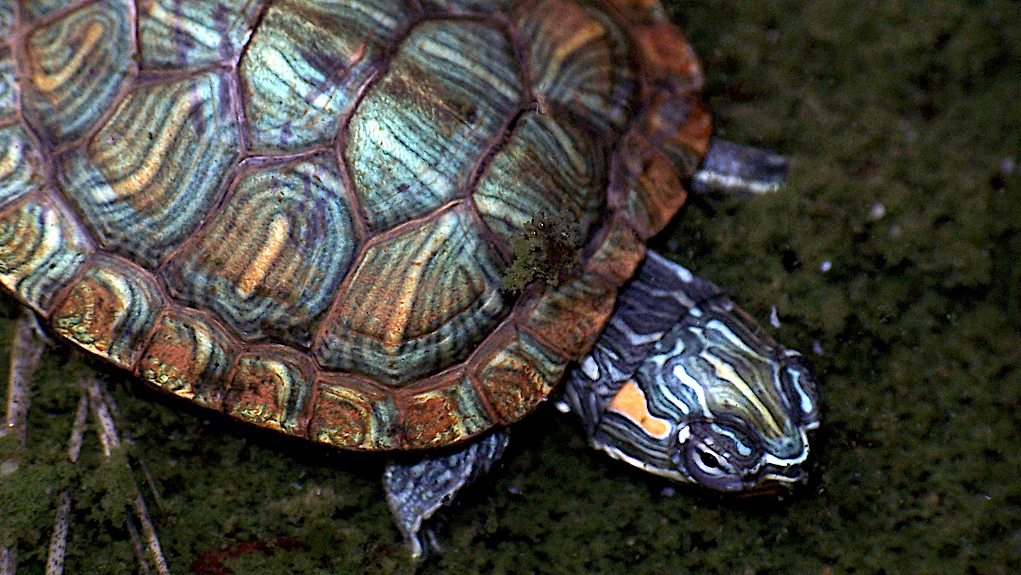BY KIERAN LINDSEY, PhD
The holidays are well behind us now. Shorter days and Jack Frost nipping at your nose have lost their novelty. We’re well into winter at this point, complete with snowplows, tire chains, and 10-pound sacks of litter in the car trunk that will never feel a kitty’s caress. In many parts of the northern hemisphere, it’s a long slog through snow, sleet, and freezing rain to get from January to jonquils.
Understandably, we look to Nature for role models. People have an inherent ability to see connections between human and non-human animals—Madison Avenue has been especially canny at choosing charismatic creatures to impersonate mankind’s enviable and endearing (or at least humorous) characteristics. Particularly at this time of year, when the mercury can’t often seem to bootstrap its way past 32°F, you’ll find a lot of furry salesfolk pitching warm and cozy wares in magazines and newspapers, on television and the Internet. I assume the general idea behind this trend is that raw, gray days bring out the hibernator in any mammal, even those of us who get around on two legs.
Not to split hairs but humans don’t really hibernate. That’s not to say we don’t go through some behavioral changes at this time of year—we do… at least so far as jobs, school, and the other routines and rituals of modern life allow, in normal, non-pandemic times.
But to my eyes, many of our cold weather coping strategies leave us looking strangely… reptilian.

See for yourself—next time the Weather Channel offers video images to accompany a predicted cold front, with or without a “wintery mix,” ask yourself if the people you see peeking out from fleece hoodies, swaths of scarves, turned up coat collars, and balaclavas as they hunch toward the warmth of home look more like bears… or turtles tucking into their shells.
Now, there’s a bit of Class warfare at play here. Homeothermic mammals (creatures whose body temperature is mostly uninfluenced by the surrounding environmental, aka warm-bloodeds) aren’t flattered by comparisons to scaly poikilothermic (creatures whose body temperature is definitely influence by the surrounding environment, aka cold-bloodeds).
Knowing this, and well aware that my claim of similar approaches to inclement winter weather will face considerable push-back, I offer a familiar and easily recognizable example: a semi-aquatic turtle called the Red-Eared Slider (Trachemys scripta elegans).

Even nature neophytes know of this species, a common resident of urban and suburban lakes and ponds, including Lafayette Park’s own man-made water features. Shell, legs, head, and tail are inscribed with stripes and nested ovals of green and yellow, the “elegant script” referenced in its Latin name (although the vibrant colors do tend to fade somewhat with age and a thick coat of algae).
The red “ear” on either side of the head distinguishes the Slider from all other North American turtle species and allows for a quick and definitive ID as they sunbathe on stones and logs. “Quick” being the operative word here; Sliders don’t hear well, but they are very sensitive to vibrations that alert them to the presence of potential predators, and they can slip back into the safety of the water with surprising speed.

In the wild, the Slider’s life cycle begins with courtship and mating as early as March or as late as July, depending on the region and the weather. Subsequently, the female heads for dry land to deposit a clutch of eggs, excavating with her hind legs to create a nest in the soil. Then she turns for home with nary a backward glance, and the turtles-to-be she leaves behind are on their own from that point forward.
Two or three months later, depending on the average ambient temperature, hatchlings emerge from the nest and set out to conquer the world. Most of them won’t make it past the first year—such is Testudine life, and death. The hatchlings who do live to see their 2nd birthday, however, can reasonably expect a couple decades of cake and candles, growing larger with each passing year (females reach 10-13 in or 25-33 cm, while males max out at 8-10 in or 20-25 cm).
In addition to predation by wading birds and mammals who don’t mind getting their feet wet, such as raccoons, skunks, and opossums, Old Man Winter is one of the biggest barriers to turtle longevity (HA! I’ll bet you thought I’d lost my original cold weather train of thought, didn’t you?). No one expects to see a Slider in a snowstorm, so it’s natural to assume they use sleep as a survival strategy. Hey, it works for two of the most diverse Orders on Earth — Chiroptera (bats) and Rodentia (rodents) — so why not for turtles as well?

But reptiles take a different road. Brumation is the technical term for a period of decreased activity that doesn’t involve the extreme metabolic changes that occur during true hibernation.
‘Round about October, as temperatures dip below 50°F, Sliders begin to settle in at the bottom of their preferred body of water, or in some cases under stream banks and tree stumps, to just hang out and chill. They’re less social, they move a little more slowly, sleep a little later, binge-watch television (I’m sure there must be a turtle equivalent), and generally feel lethargic and unmotivated. On warmer days, they’ll drag themselves up from the depths to stretch their limbs, have some lunch, and catch some rays with a few friends… but as soon as old Sol goes into hiding they follow suit, retreating into their shells to become stick-in-the-muds until spring.
Social commentators have come up with any number of marketable catch phrases to describe the human desire to turn our backs on a less than hospitable world—cocooning, burrowing, vegging out, even hibernating. The admen (and adwomen) may argue that it doesn’t have the same sizzle, but what we’re really talking about here is humans brumating.
Sound like anyone you know?


